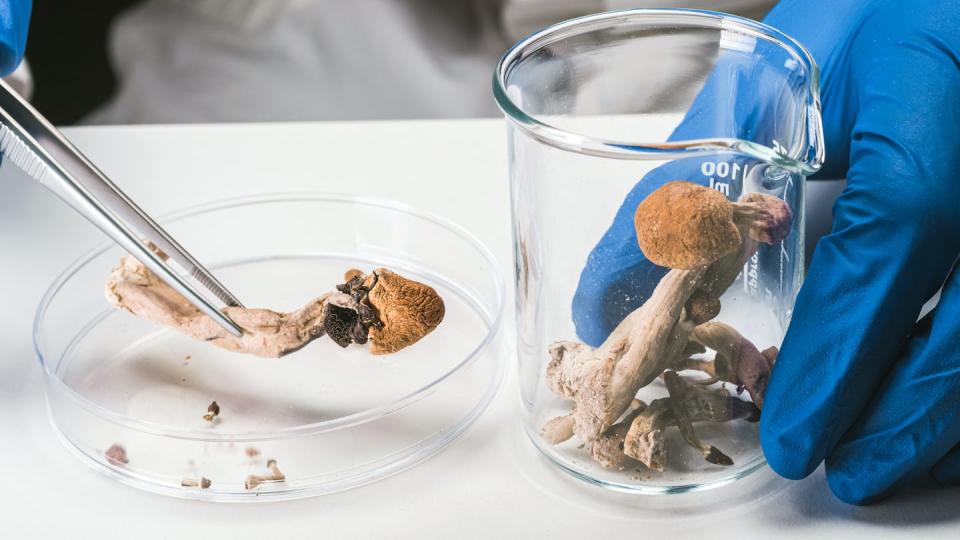Over the past several decades, psychedelics have been widely stigmatized as dangerous illicit drugs. However, the recent increase in academic research on their use in the treatment of psychiatric disorders is leading to a recent change in public opinion.
Psychedelics are psychotropic drugs: substances that affect your mental state. Other types of psychotropics include antidepressants and anti-anxiety medications. However, psychedelics and other types of hallucinogens are unique in their ability to temporarily trigger intense hallucinations, emotions, and lapses in self-awareness.
Researchers examining the therapeutic potential of these effects have found that psychedelics can significantly reduce symptoms of depression and anxiety, PTSD, substance abuse, and other psychiatric disorders. Intense experiences, or “excursions,” triggered by psychedelics are thought to create a temporary window of cognitive flexibility that allows patients to access elusive parts of their psyche and build better coping skills and thought patterns.
However, it is still unclear exactly how psychedelics produce these effects. As psychiatry and machine learning researchers, we were interested in understanding how these drugs affect the brain. Thanks to artificial intelligence, we have been able to map the subjective experiences people have when using psychedelics to specific areas of the brain, down to the molecular level.

Mapping ‘excursions’ in the brain
Each psychedelic functions differently in the body, and the subjective experiences these drugs create each have different therapeutic effects. For example, mystical-type experiences or feelings of oneness and oneness with the world are associated with reductions in depression and anxiety. Knowing how each psychedelic produces these specific effects in the body can help clinicians optimize their therapeutic use.
To better understand how these subjective effects arise in the brain, we analyzed more than 6,000 written accounts of hallucinogenic experiences from the Erowid Center, an organization that collects and provides information about psychoactive substances. We transformed these references into a model called the bag-of-words model, which breaks a given text into individual words and counts the number of times each word appears. We then matched the most common words associated with each psychedelic with receptors in the brain known to bind to each drug. After using an algorithm to extract the most common subjective experiences associated with these word-receptor pairs, we mapped these experiences to different brain regions by matching them with the types of receptors present in each region.
We found new connections and patterns that confirm what is known in the research literature. For example, changes in sensory perception have been linked to a serotonin receptor in the brain’s visual cortex that binds to a molecule that helps regulate mood and memory. Feelings of transcendence were linked to dopamine and opioid receptors in the salience network, a collection of brain regions involved in managing sensory and emotional input. Auditory hallucinations were linked to a set of receptors spread throughout the auditory cortex.
Our findings are also consistent with the leading hypothesis that psychedelics temporarily reduce top-down executive function, or cognitive processes related to inhibition, attention, and memory, among others, and enhance brain regions involved in sensory experience.
Why is it important?
The United States is going through a deep mental health crisis that has been exacerbated by the Covid-19 pandemic. But no truly new psychiatric drug treatments have emerged since Prozac and other selective serotonin reuptake inhibitors, the most common type of antidepressants, in the 1980s.
Our study shows that it is possible to map diverse and highly subjective psychedelic experiences to specific regions of the brain. This information could lead to new ways to combine existing or as yet undiscovered compounds to produce desired treatment effects for a range of psychiatric conditions.
Psychiatrist Stanislav Grof famously suggested: “Psychedelics, when used responsibly and with due care, will be to psychiatry what the microscope is to the study of biology and medicine, or the telescope is to astronomy.” As psychedelics and other hallucinogens become more widely used clinically and culturally, we believe that further research will elucidate the biological basis of the experiences they evoke and help realize their potential.
This article is republished from The Conversation, an independent, nonprofit news organization providing facts and authoritative analysis to help you understand our complex world. Written by: Galen Ballentine, SUNY State University of Health Sciences and Sam Friedman, Harvard University
Read more:
Sam Friedman receives funding from IBM and Bayer.
Galen Ballentine does not work for, consult, own shares in, or receive funding from any company or organization that would benefit from this article, and has disclosed no relevant affiliations beyond his academic duties.